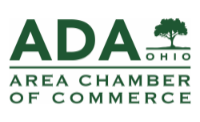The Ohio Northern University Pettit College of Law was recognized as one of the top law schools in the nation for preparing students to pass the bar in the 2015 February issue of The National Jurist 2015.
According to the article “Best Schools for Bar Exam Preparation,” ONU had a first-time taker passage rate of 86.46 percent but was predicted to have a first-time passage rate of 82.45 percent based on the LSATs of the ONU bar takers. ONU exceeded that mark by 4.86 percent, which shows the added value that ONU provides its students. ONU’s three-year average overall passage rate places it first among the Ohio law schools.
Dean Bales, dean of the ONU law school, said, “At ONU, we are equally committed to providing our students with the substantive knowledge of what the law is, the analytical ability to reason what the law should be, and the lawyering skills to vigorously represent their future clients and pursue justice.”
The study by the National Jurist used linear regression to find the algebraic equation that best predicted a law school’s average bar exam pass rate based on its students’ average LSAT scores. The study used the average LSAT score and the average bar pass rate for the classes of 2011 and 2012, the two most recent available data sets at the time of the study. LSAT scores accounted for 45 percent of the differences between schools in pass rates.
By comparing a school’s actual pass rate with the pass rate predicted by LSAT scores, individuals can see how much better or worse it does in comparison to the average law school with similar student LSAT scores. Because average pass rates vary greatly from state to state, it would be expected that law schools in states with low rates would have fewer passing students.
For that reason, the study computed a second equation adjusted for state pass rates. This state average pass rate accounted for an additional 24 percent of the differences in pass rates between schools. Between average LSAT and state pass rate, the final actual school pass rate was 69 percent explained, leaving 31 percent of the pass rate to be explained by other aspects.
The adjusted predictions from this model give us a better sense of how well each school’s pass rate measures up based on LSAT scores after taking into account the difficulty of passing the bar exam in the state in which the school is located.


